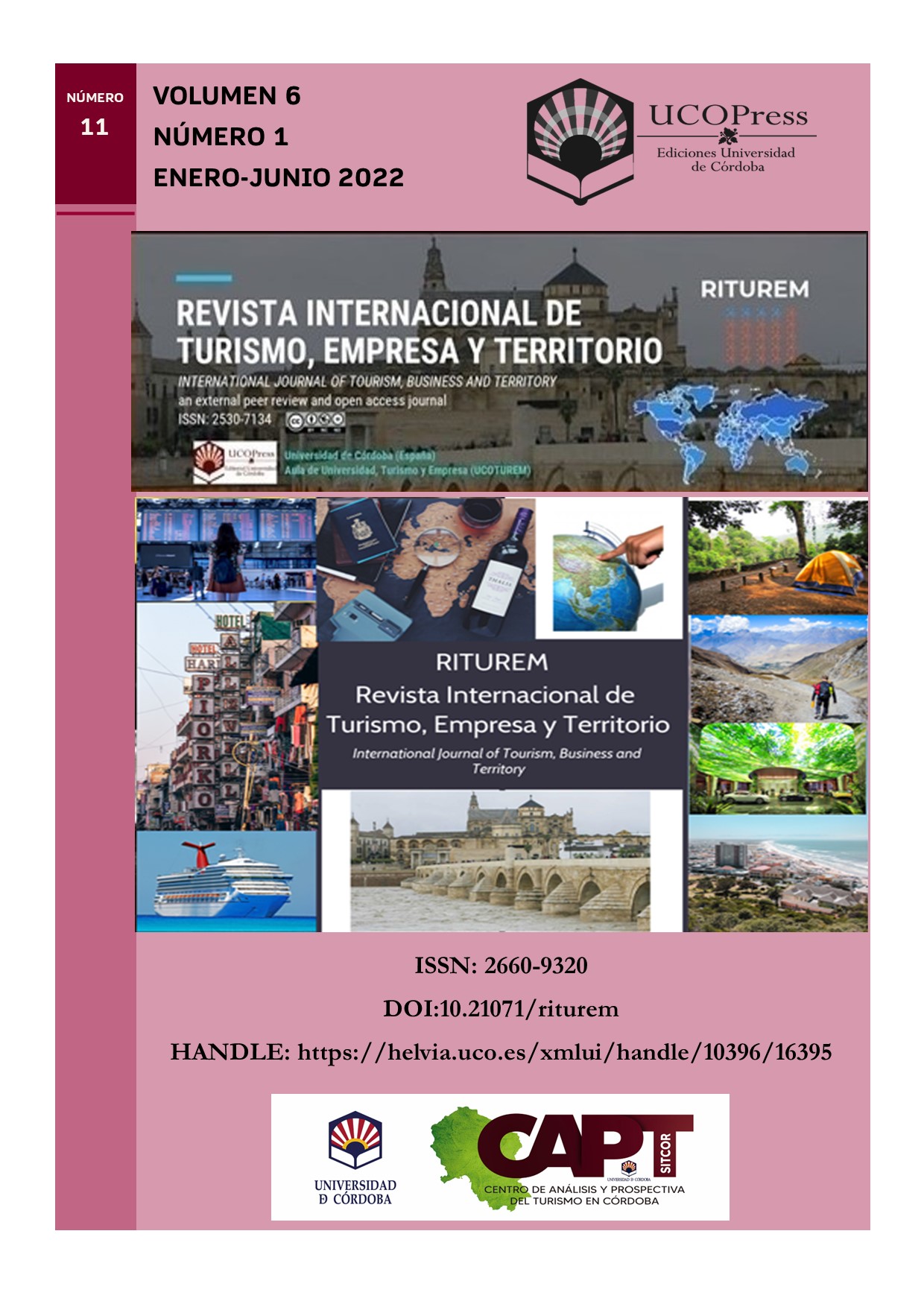The Bi Xie Route (China): a journey through 2000 years. Proposals for product design and asset recovery
Main Article Content
Abstract
In this paper, the potential for tourism valorization of various representative cultural heritage resources of the Han dynasty (202 a.C.-220 d.C.) in China, as constitutive territorial resources of the Bi Xie route, is studied. For this, the perception and needs of the tourist demand associated with the start-up and tourist-recreational valorization of this historical-cultural route are analyzed and various proposals and recommendations are made for the viability and economic and social sustainability of said route, currently very unknown and underused unlike other great tourist-cultural circuits in China such as the Silk Road, the Ancient Route of Tea and Horses and the one of the Grand Canal of Beijing-Hangzhou.
Keywords: Bi Xie Route, cultural tourism, heritage resources, China.
Downloads
Article Details
Copyright Notices Proposed by Creative Commons
Proposed policy for journals offering deferred open access
Those authors who have publications with this journal, accept the following terms:
1. The authors will retain their copyright and guarantee to the journal the right of first publication of their work, which will be simultaneously subject to the Creative Commons Recognition License CC BY-NC 4.0 (Creative Commons — Attribution-NonCommercial 4.0 International — CC BY-NC 4.0 ) hird parties to share the work provided that its author and its first publication is indicated this journal and no commercial use is made.
2. Authors may adopt other non-exclusive licensing agreements for the distribution of the published version of the work (e.g., deposit it in an institutional telematics file or publish it in a monographic volume) provided that the initial publication is indicated in this journal.
3. Authors are allowed and recommended to disseminate their work over the Internet (e.g. in institutional telematics files or on their website) before and during the submission process, which can produce interesting exchanges and increase citations of the published work. (See The effect of open access: http://opcit.eprints.org/oacitation-biblio.html.
